Tallinn

Cultural and commercial centre of Estonia on the Baltic Sea

Estonia is one of the three small countries immediately west of Russia known as the Baltic States, being as they are, on the Baltic Sea. It has been variously ruled by Denmark, Sweden and Russia, and first declared independence in 1918, only to be occupied by the Soviets from 1940. It broke away from the USSR in 1991, and in 2004 Estonia joined the EU: six weeks later, I visited. Slightly smaller and less populous than its neighbour Latvia to the south, Estonians account for the majority of the population, but around one quarter are Russians who are slowly trickling back home. The Estonian language is very different from the Slavic languages of its neighbours, and is much closer to Finnish.
We visited Estonia as part of our 2004 tour of the Baltic, and stayed for two nights in the capital, Tallinn, at Hostel Vana Tom just off Town Hall Square. We had timed our visit perfectly to coincide with the summer solstice festival where everyone leaves the cities and goes to have parties in the country, so the place was somewhat empty and a lot of businesses were closed. Unperturbed, we still found plenty to do including a proper techno-party nightclub in the new town, with more strobes than I’ve ever witnessed before or since.

Raekoja Plats is the town hall square of the old city of Tallinn, with the medieval Tallinn Town Hall flanking it on the right. It was originally the market square and dates from around 1370, with the town hall being completed in 1404.
Town Hall Square is lined with cafés and restaurants which were quite expensive, at least by Estonian standards, so being the Scotsmen we are, we headed into a side street for cheese boards, steaks and beers for 200 kroons a head, or around £8.
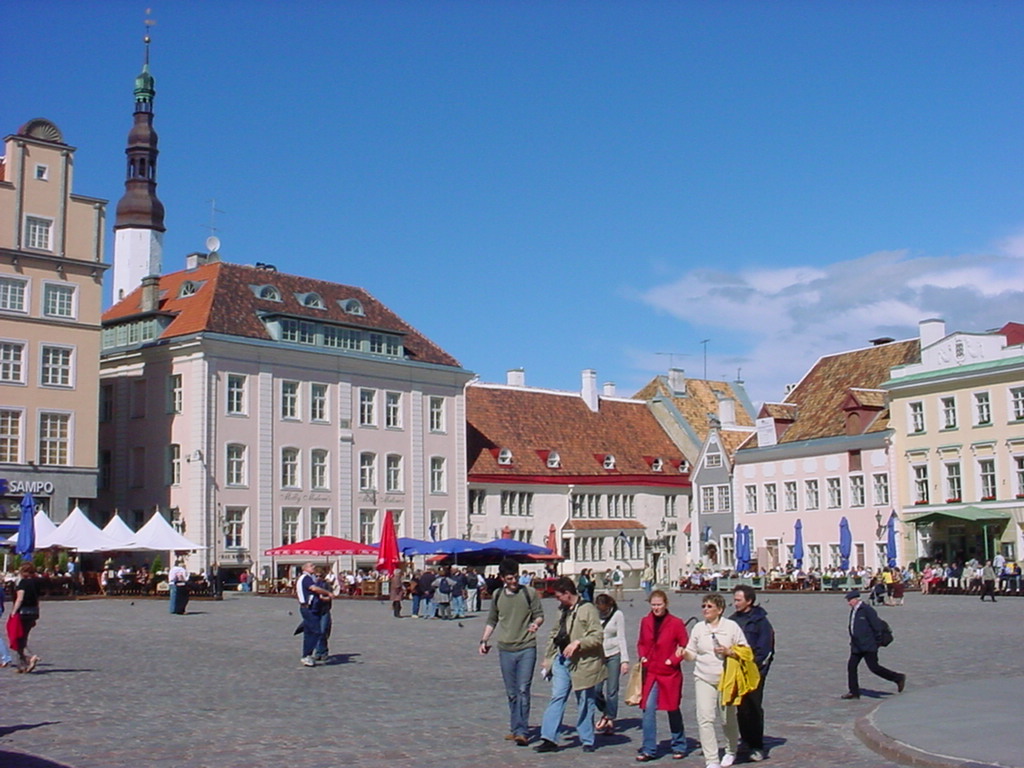
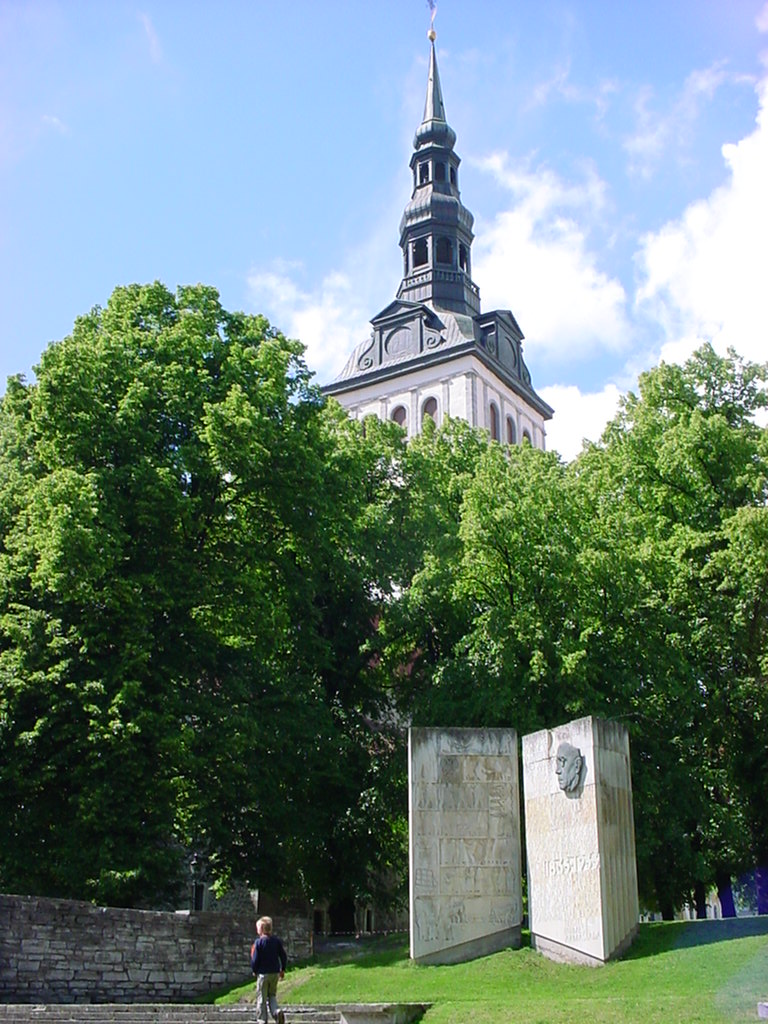
St Nicholas Church is another prominent spire, with its tower dating from 1515, but was destroyed during the Second World War, subsequently rebuilt and converted to a museum and occasional concert hall. In the foreground is the monument to Eduard Vilde, national writer and later ambassador to Germany.
There were lots of medieval-esque vendors wandering around on the streets, selling nuts, crafts and in this case, strawberries. There were also the world’s most enthusiastic postcard sellers, a popular summer job for students: they wouldn’t let me leave until I bought a stack of cards and one of my pals bought a calendar.


Stylish signage for presumably a local bootmaker. Or maybe I’m just talking cobblers.
We headed up the steep stairs of Luhike jalg to reach the elevated plateau of Toompea.
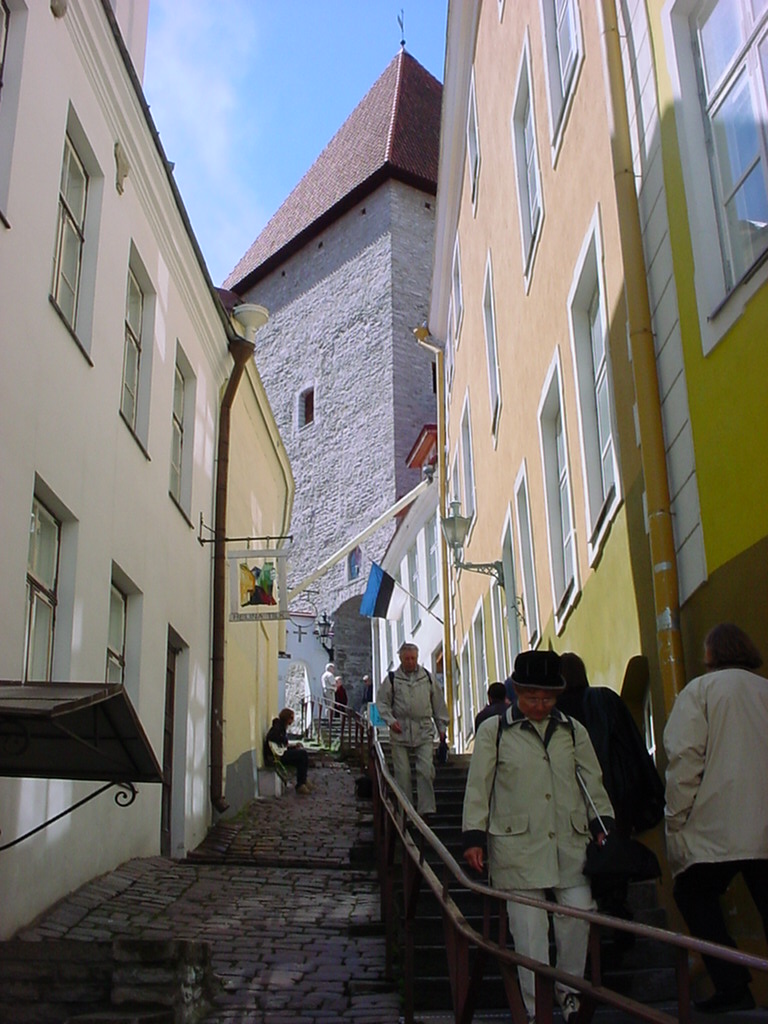
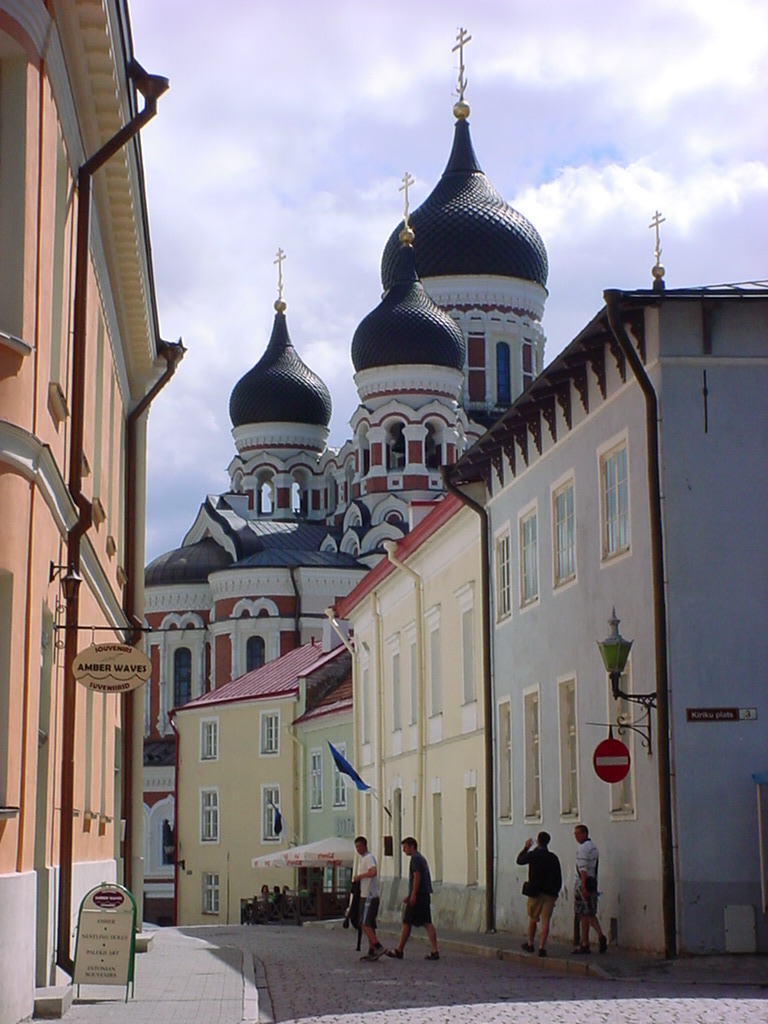
Toompea is the oldest part of Tallinn’s old town, with the first fortifications being built in the 10th century. It is still where the national government sits today. We headed towards the domes of Aleksander Nevsky Cathedral, named for the Grand Prince of Kyiv.
The view from Toompea of the red rooftops of the old town from the high point in the city. At the end of the last ice age, Toompea was an island and the sea covered all of what is now Tallinn. The prominent church is St Olaf’s, built in the 12th century
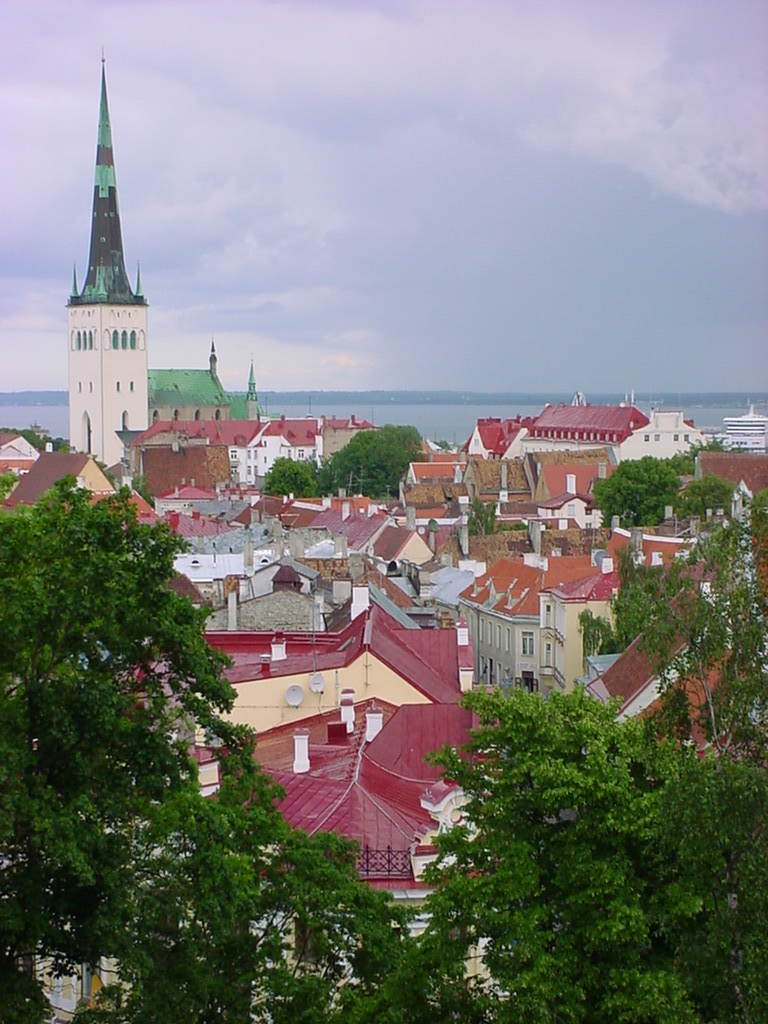
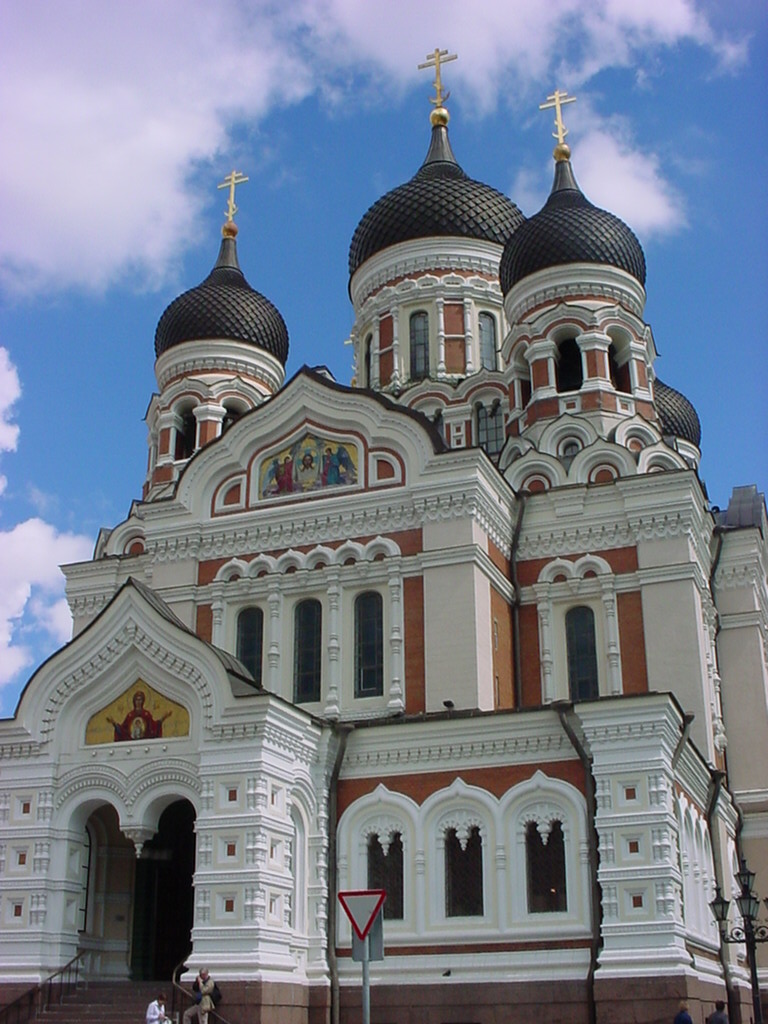
Alexander Nevsky Cathedral was built in 1900 to look much older than it actually is, as part of the “Russification” of Estonia. After the end of the Russian Empire in 1917, the Estonians were unsure what to do with it, with demolition considered as it is Russian Orthodox and not Estonian, but at the same time it is a culturally significant building. It was fully restored in the 1990s and stands at the top of Toompea hill.
We headed back down into the lower old town along the Long Leg, a more gently sloping cobbled street heading towards the spire of St Olaf’s Church.
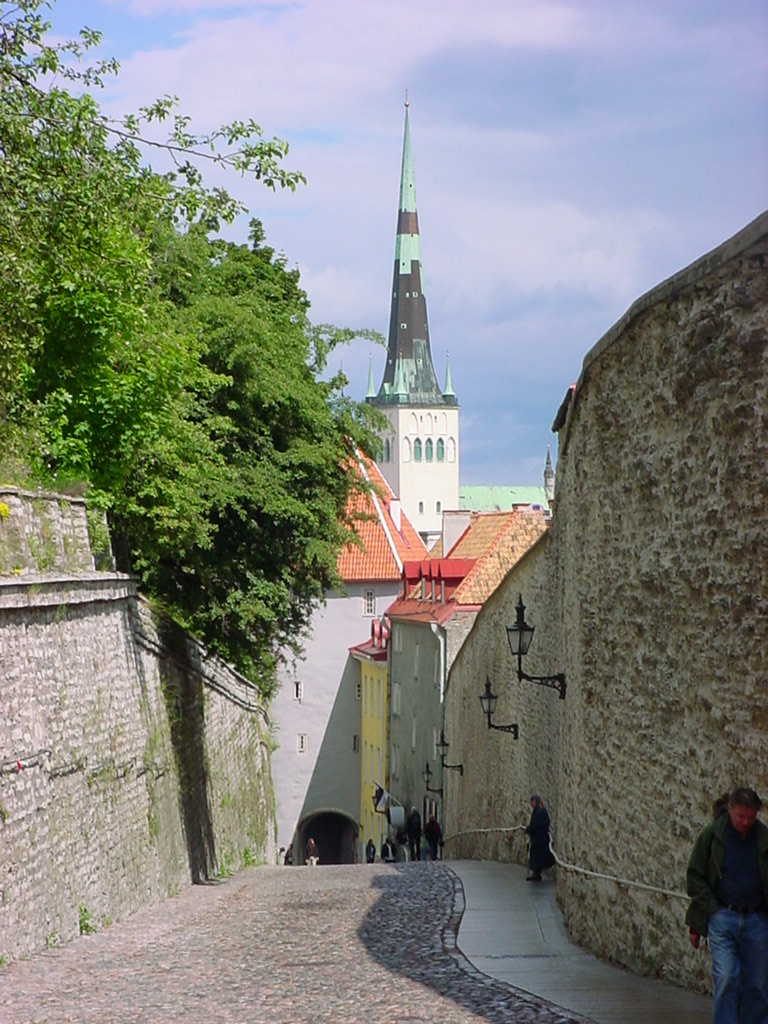

Wandering along Pikk towards Holy Spirit Church.
The old town has been nicely restored and repainted throughout. I really liked the old town of Tallinn, the scenery was very nice and picturesque, and there were hardly any cars. Some of the buildings on Toompea rise above in the background.
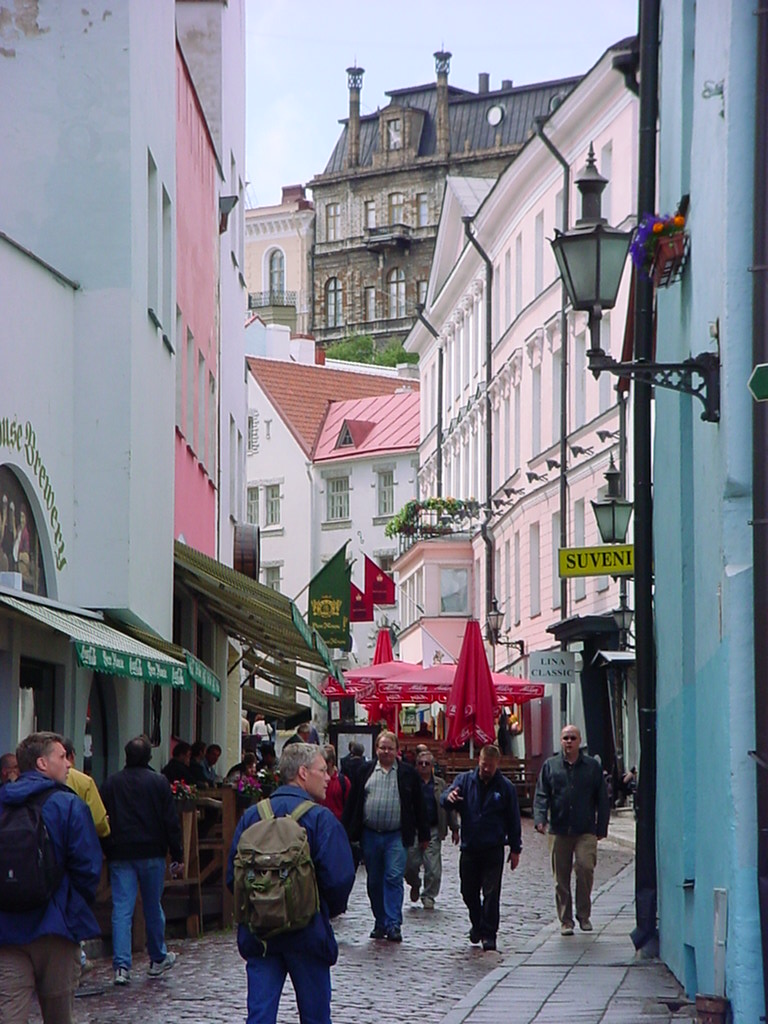

Tallinn’s old town is still mostly surrounded by walls, similar to York and Xi’an and of a similar vintage, with the first section dating back to the 1200s. The walls are part of what make the old town a World Heritage Site.
A pretty view through Monastery Gate in the medieval town wall. I really enjoyed how peaceful and relaxing it was wandering around, the whole place was laid back and just cool. The new town outside is of course much more modernised, with fancy hotels and the like, but we were happy to stick to the charm of the old town.
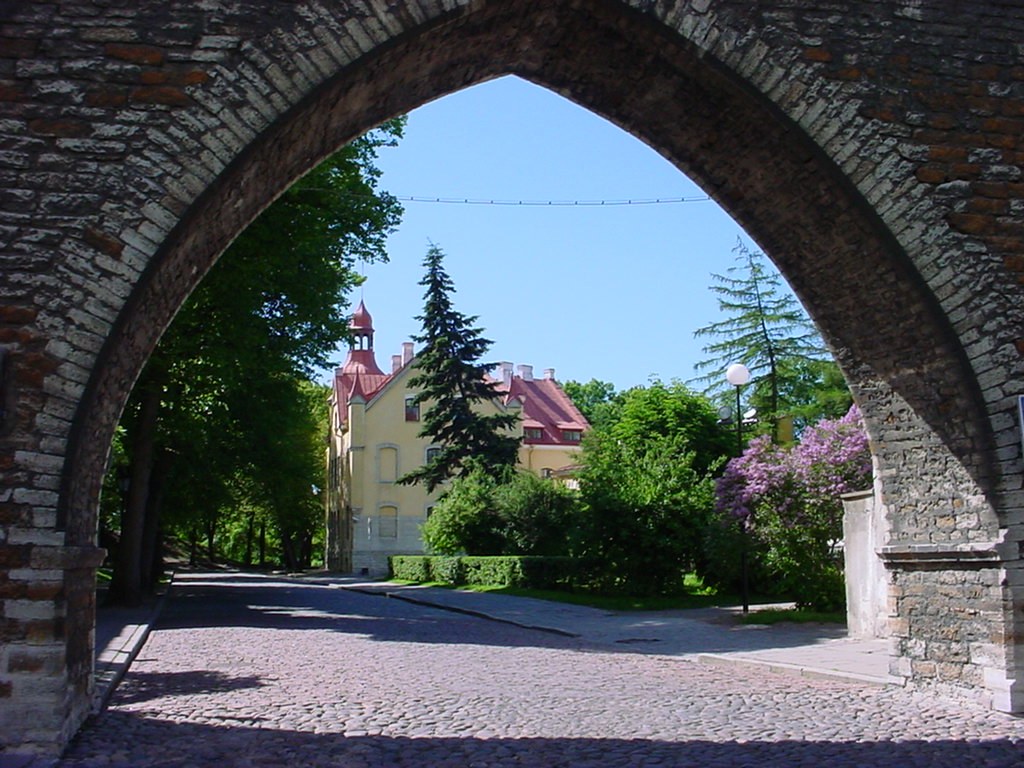
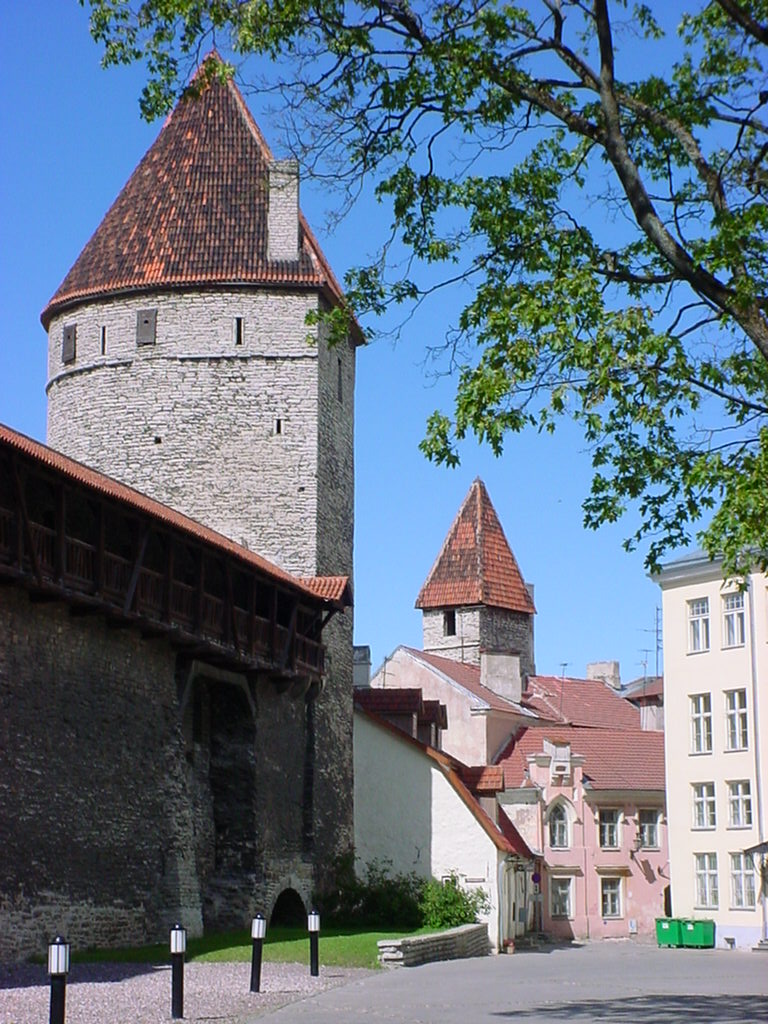
The city walls are punctuated by over sixty towers and fortifications, this is Kuldjala torn, the Golden Leg Tower.
A final view from Toompea across the old town with one of the city wall guard towers, and St Olaf’s Church in the distance.

Created 2004 | Updated 2013, 2024
